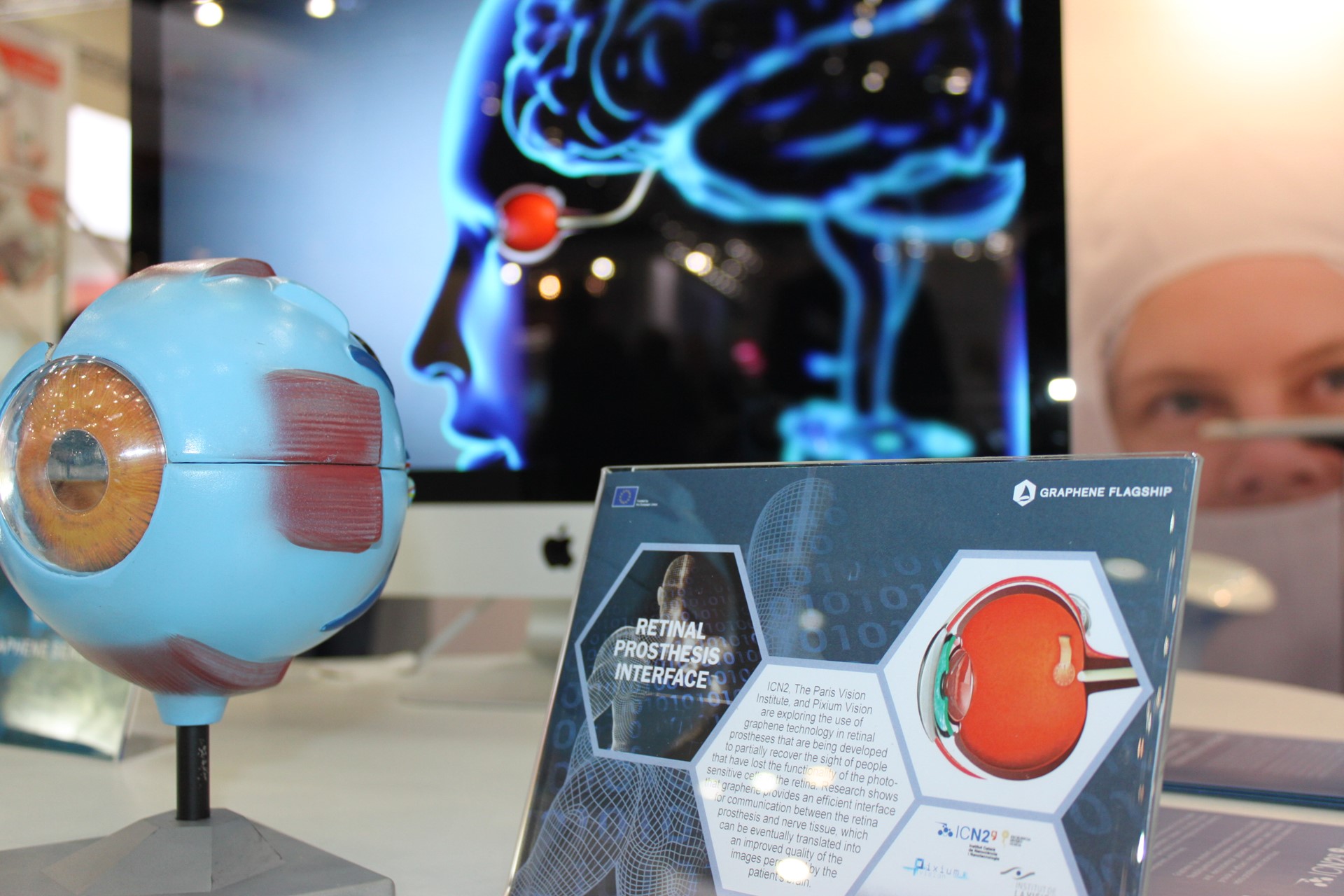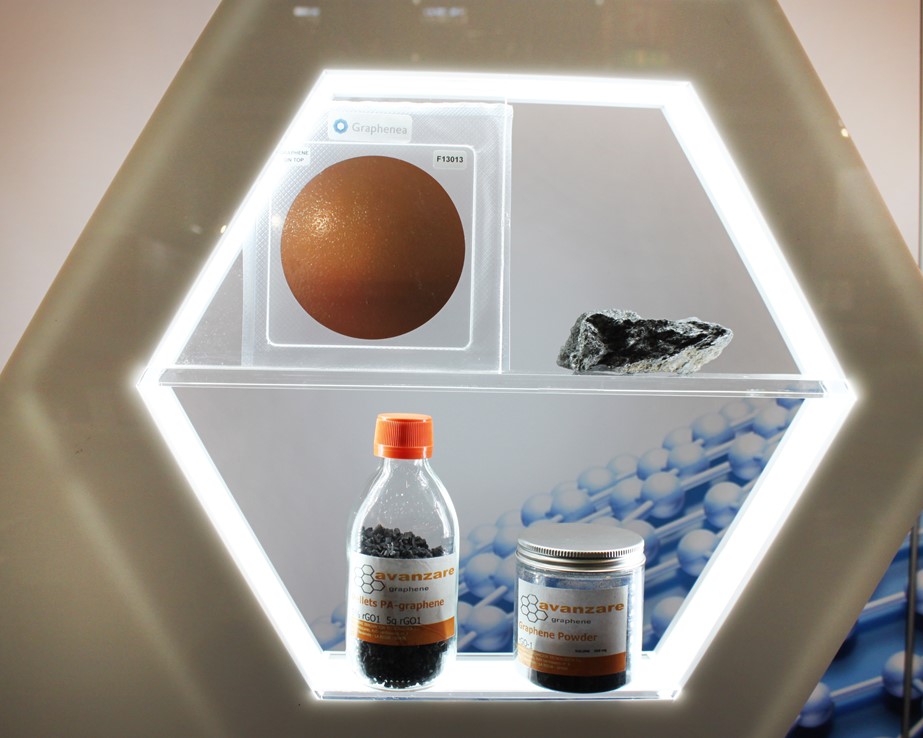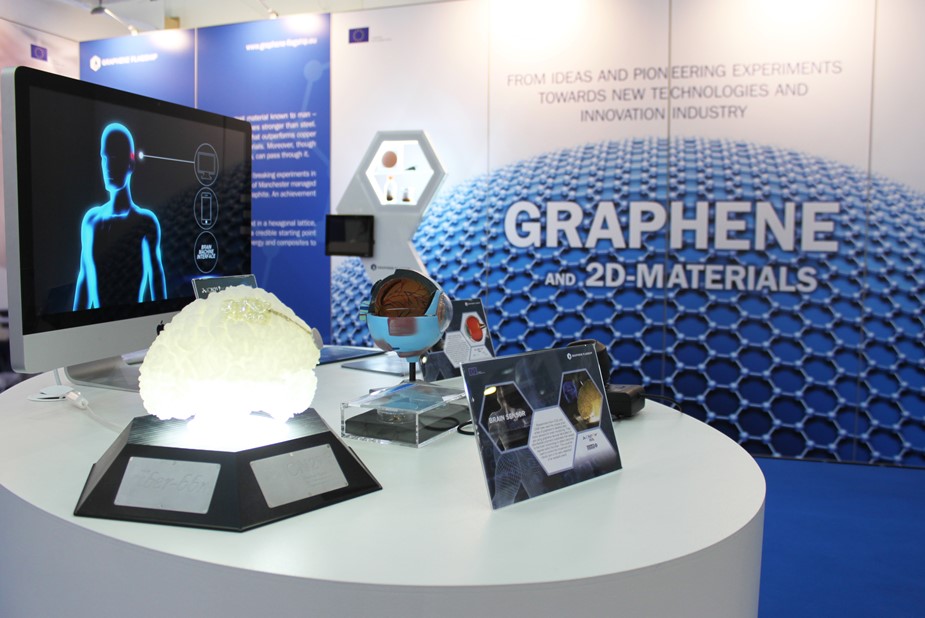MEDICA 2017
MEDICA 2017: Trade fair
MEDICA is the largest medical trade fair in the world – in 2017 it attracted more than 123,000 professional trade visitors from 130 nations and more than 5,100 exhibitors from 66 countries in 17 halls. The Graphene Flagship used this opportunity to showcase the latest graphene research in Graphene Biomedical Technologies to decision-makers in the medical industry from all over the world.
Graphene Biomedical Demonstrators
Brain Computer Interface
The flexible and lightweight nature of graphene, coupled with its high conductivity, makes it an excellent material for bridging the brain computer interface for monitoring brain activity in a non-invasive manor. Guger Technologies - g.tec (Austria) is using graphene as an electrode to measure the electrical signals in the brain, and has been able to produce a device with real time processing that is also able to produce a stronger output signal.
Prosthetic Hand
The robotic prosthetic hand is controlled by a wearable sensor in the form of a bracelet made by a cellulose and graphene composite, developed by Istituto Italiano di Tecnologia – IIT (Italy). Current commercially available electrodes are big, heavy and invasive whereas the graphene-based wearable sensor is lightweight, flexible and comfortable to wear, which is increasing the user experience for the patient.
.jpg?RenditionID=5) Brain Sensor
Brain Sensor
Researchers from ICN2 and CNM have used the unique properties of graphene to develop electronic sensors for brain monitoring. They are using graphene devices fabricated on ultra-flexible polymeric substrates that adapts to the brain morphology to detect electrical signals within the brain. This could be used to control the movement of a robotic arm or for early detection of an epileptic event.
Retinal Prosthesis Interface
ICN2, The Paris Vision Institute, and Pixium Vision are exploring the use of graphene in retinal prostheses that are being developed to partially recover the sight of people that have lost the functionality of the photosensitive cells. Research shows that graphene provides an efficient interface for communication between the retina prosthesis and nerve tissues, which can be translated into an improved quality of the images perceived by the patient’s brain.
Photo Gallery




